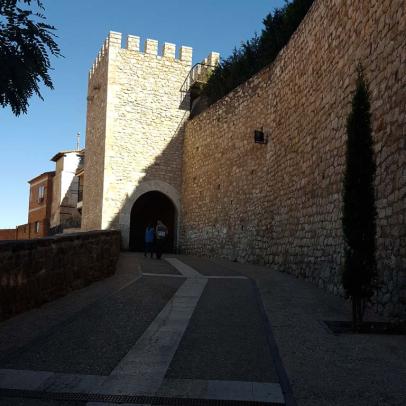Some interesting remains of the old city wall surrounding Teruel are still visible. Although no visible remains of the castle survive, some parts of the walls, gates and turrets are still visible.
Two of the gates are still standing: the gate of San Miguel or la Traición, which is situated next to Arcos aqueduct and has a basket-handle arch in the interior and a pointed arch in the exterior; and, the gate of Daroca or Andaquilla, which has two pointed arches and a bent passage and is connected to San Martín tower. Several parts of the wall have been found recently in this area.
Four of the towers of the old city wall have survived to the present: San Esteban, Lombardera, Ambeles, which is star-shaped, and Rincón, which has a rectangular base and it is connected to the old city wall. The city walls date back to the period between the 12th and 13th century.
Little known facts exist of the 11th century fortress, for only a small garrison was deployed to Teruel at the time. The reference included in El Cantar de Mío Cid is probably to be explained on the grounds that the town’s significance was growing in importance at the end of the 12th century. This is the reason why the poet of El Cantar notes that El Cid laid under tribute the Muslim plazas, including Teruel, after setting up his camp in El Poyo.






